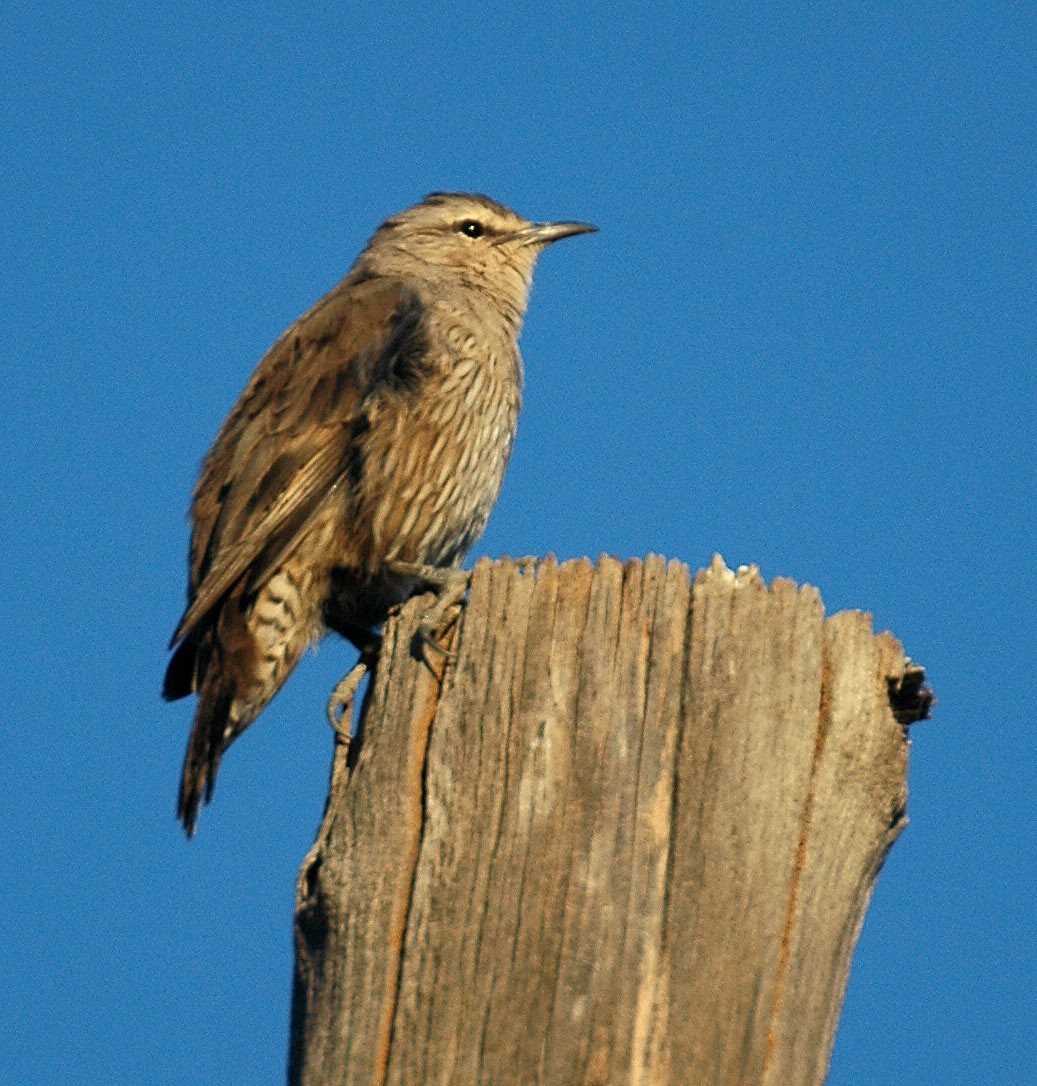Brown Treecreeper
A species of Typical Australasian Treecreepers Scientific name : Climacteris picumnus Genus : Typical Australasian Treecreepers
Brown Treecreeper, A species of Typical Australasian Treecreepers
Botanical name: Climacteris picumnus
Genus: Typical Australasian Treecreepers
Content
Description General Info
 Photo By Aviceda , used under CC-BY-SA-3.0 /Cropped and compressed from original
Photo By Aviceda , used under CC-BY-SA-3.0 /Cropped and compressed from original Description
Adult birds are around 16.5 centimetres (6.5 in) long, with a wingspan of 26 centimetres (10 in), and weigh on average around 31.5 grams (1.11 oz). Adult plumage is light grey-brown above with light grey face and neck, darker grey on the crown with dark ear-coverts. The supercilium is prominent and pale on adults, while grey and indistinct on juveniles. The throat is cream to white and pale brown on the breast. The lower breast is streaked with fine black-grey and white. In flight a dark wing-bar is visible. Sexes of the species differ in plumage, with the uppermost breast of the male streaked black and white, while the female has rufous and white streaking. Juvenile plumage is different from that on the adult with the hind-neck, nape, crown and forehead darker than that of adult males. The call has been described as a spink spink. 
Size
18 cm
Nest Placement
Tree
Feeding Habits
Brown Treecreeper primarily consumes ants, beetles, and insect larvae. They exhibit foraging behaviors that include probing tree fissures and hopping along logs. Unique to their diet, brown Treecreeper may also feed on nectar. Foraging is typically done in pairs or small groups during daylight.
Habitat
The brown Treecreeper is predominantly found in open, grassy eucalypt woodlands with rough-barked trees and minimal shrubbery. Their preferred habitats include drier forests with ironbarks and gums, as well as mallee woodlands. They can also thrive in riparian zones with river red gums, cypress pine, acacia woodlands, and even semi-cleared pastures. Adaptability allows them to inhabit both unburnt areas and regions with annual burning.
Dite type
Insectivorous
General Info
Feeding Habits
Bird food type
Behavior
Gregarious with a complex social structure between individuals and breeding groups, the species maintains a territory which sometimes overlaps with other brown treecreeper groups. Usually observed in pairs or a small group of up to eight individuals, incursions by other groups of brown treecreeper are often tolerated by residents of the same species. Roosting nocturnally and solitarily, the brown treecreeper forages during the day on the ground and on tree surfaces in small groups or pairs, feeding mainly on ants, beetles and insect larvae. While occasionally feeding on nectar, the brown treecreeper more often probes fissures, cracks and hollows of trees, gleaning and probing as it hops along logs or spirals up rough barked trees, spending more time foraging on the ground if a resident of an arid territory. 
Species Status
The conservation status of the brown treecreeper is considered of "least concern" by the IUCN, while the subspecies victoriae, is listed in New South Wales as Vulnerable under Schedule 2 of the Threatened Species Conservation Act (1995). Subspecies victoriae is listed by the Department of Sustainability and Environment, Victoria, as Near-threatened on the Advisory List of Threatened Vertebrate Fauna though this listing does not infer any statutory protection. 
Scientific Classification
Phylum
Chordates Class
Birds Order
Perching birds Family
Australasian treecreepers Species
Brown Treecreeper